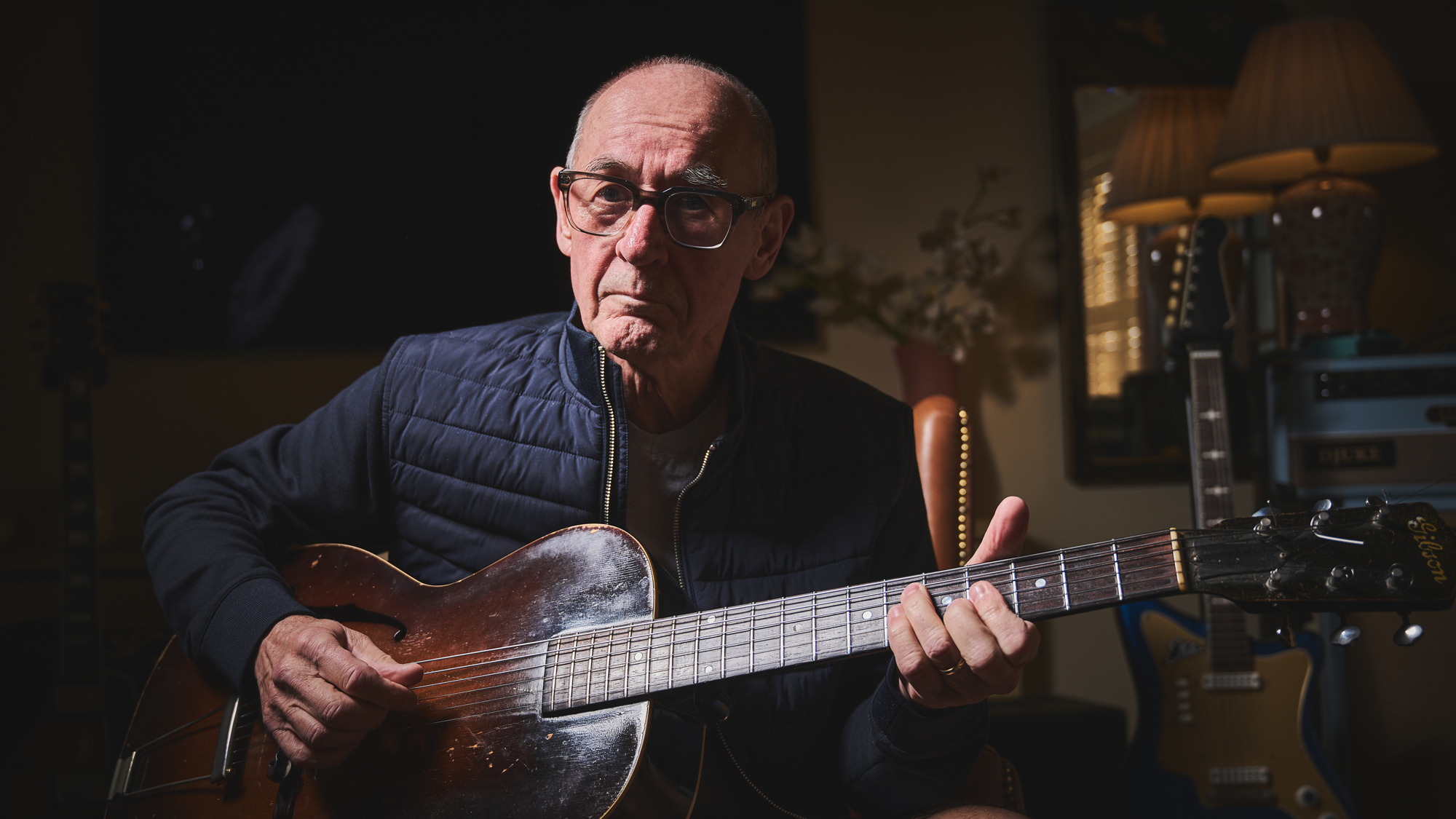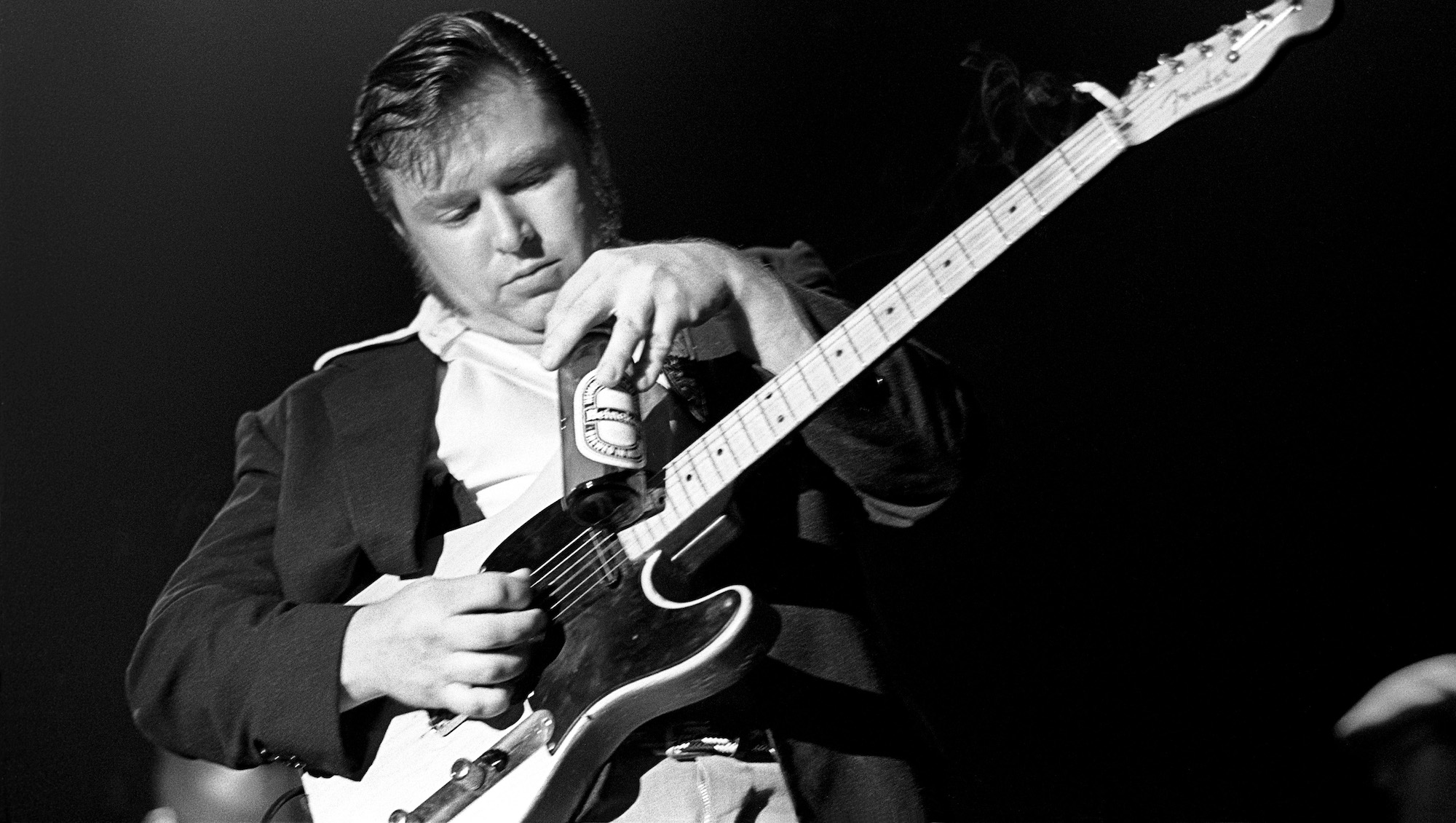The history of the Fender 'Tweed' Deluxe – the definitive tweed amp beloved by Neil Young, Scotty Moore and Don Felder
The story of the amp behind the tweed tone that still sounds “as modern as tomorrow”…

For many, the Deluxe amp defines the Fender tweed sound. Its rock ’n’ roll growl and sweet singing saturation has long been associated with countless guitar luminaries over the years including Larry Carlton, Mike Campbell, Neil Young, Scotty Moore and Don Felder.
Several permutations of the Deluxe were designed, although it’s the sixth version – the 5E3, released in 1955 and manufactured until 1961 – that is the most widely acclaimed and serves as the basis for Fender’s hand-wired ’57 Custom Deluxe reissue.
The story of the Deluxe begins in 1946, when the first Fender-branded amps were released. Referred to as ‘woodie’ amps because of their natural hardwood finish, they are easily identified by their distinctive red, blue or gold-coloured grille cloths and chrome-plated vertical front strips.

These original woodie models consisted of the Princeton, Deluxe (branded ‘Model 26’ on the control panel) and Professional, and were fitted with either an eight, 10 or 15-inch speaker (respectively).
Featuring two inputs labelled ‘instruments’, and one ‘microphone’ input, along with separate volume controls for each and a single tone control, the Model 26 Deluxe is the precursor to the first tweed Deluxe model, the 5A3.
In 1947, Fender added the ‘V’-front Dual Professional 2x10 combo (later renamed the Super) to the top of the company’s amp range, and with its new tweed covering it set the standard in Fender amp aesthetics until the end of the 50s when harder wearing Tolex vinyl covering appeared.

By 1948, Fender’s entire amp range had transitioned to the new-look tweed style. Affectionately known as ‘TV-front’ amps on account of their resemblance to a 1950s TV set, this included the upgraded 1x12 Deluxe model 5A3.
Get The Pick Newsletter
All the latest guitar news, interviews, lessons, reviews, deals and more, direct to your inbox!

1946
Model 26 ‘woodie’; natural finish; 10” speaker; 3 inputs
1948
Model 5A3; tweed cover; top/rear chrome control panel; 12” speaker
1953
Model 5B3 & 5C3; 5C3 with negative feedback circuit added
1954
Model 5D3; ‘wide panel’ design; negative feedback circuit removed
1955
Model 5E3; ‘narrow panel’ design; 4 inputs; cathodyne phase splitter
1961
Model 6G3; brown front panel and Tolex cover; tremolo circuit
1963
Model/circuit AA/AB763; Deluxe Reverb released
1967
Discontinued; Deluxe Reverb with silver panel
1982
Deluxe Reverb discontinued (superseded by Deluxe Reverb II)
2007
Custom Series ‘57 Deluxe released (5E3 reissue)
The next Deluxe model – the 5B3 – appeared in 1953 and is essentially the same as the 5A3 in terms of circuitry, although by this point Fender’s ‘wide panel’ tweed amp format had been implemented across the line.
Significant revisions to the Deluxe’s electronics came with the 5C3, which included a negative feedback circuit, although this was removed from the further revised 1954 5D3 ‘wide panel’ design.
Appearing in 1955, Fender’s ‘narrow panel’ tweed amp range featured the now legendary 5E3 model. As per all previous versions, it runs on a pair of cathode-biased 6V6GT power valves (which some hear as akin to the chime of a Vox AC15) and features a 5Y3GT rectifier valve, which has a tendency to sag and produce a slightly spongey attack.
Partly due to its lack of a negative feedback circuit, the 5E3 sounds characteristically sweet at lower volume due to added harmonics, before breaking up into saturated distortion at higher settings. The 5E3’s unique cathodyne phase splitter also adds to its distinctive tone.
Throughout the early days of rock ’n’ roll, the tweed Deluxe proved to be a dependable amp for use both on stage and in the studio. However, in 1961 the end of the tweed Deluxe era was heralded by the arrival of the more powerful tremolo-equipped brown Tolex-covered 6G3 Deluxe.
Rod Brakes is a music journalist with an expertise in guitars. Having spent many years at the coalface as a guitar dealer and tech, Rod's more recent work as a writer covering artists, industry pros and gear includes contributions for leading publications and websites such as Guitarist, Total Guitar, Guitar World, Guitar Player and MusicRadar in addition to specialist music books, blogs and social media. He is also a lifelong musician.











